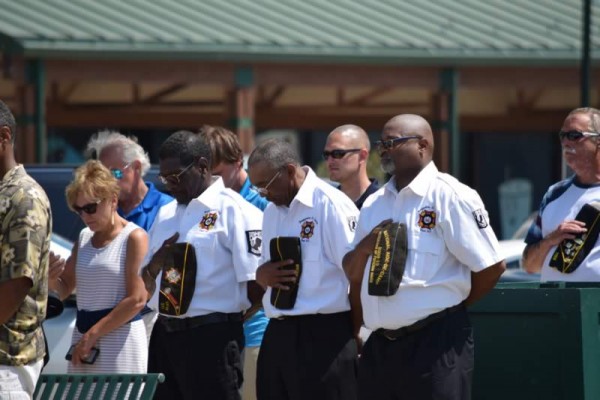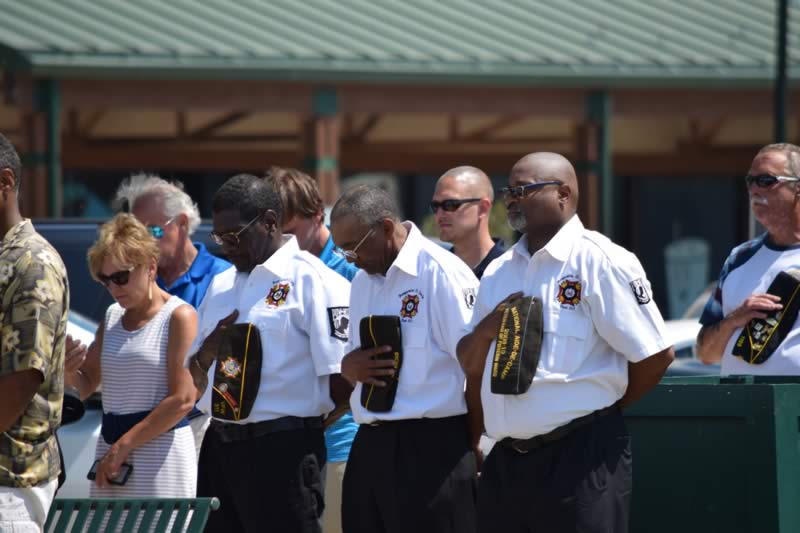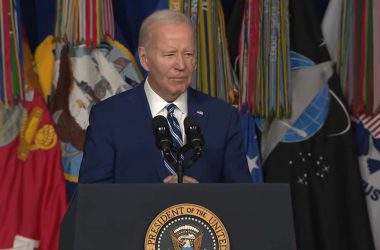Data helps VA develop programs and initiatives for Veterans and their loved ones

By Matthew Miller
Executive director, VA Suicide Prevention, Office of Mental Health and Suicide Prevention
Washington, D.C.-(ENEWSPF)- Last fall, I shared some good news: VA’s latest data showed meaningful downward trends in Veteran suicide counts and rates.
The 2022 National Veteran Suicide Prevention Annual Report analyzes Veteran suicide data from 2001 through 2020 and contains the most comprehensive set of data about Veteran suicide mortality to date.
When the report first came out in September, I shared key findings, like:
- There were 343 fewer Veteran suicides in 2020 than in 2019.
- From 2018 to 2020, age- and sex-adjusted suicide rates for Veterans fell by 9.7% (5.5% for non-Veterans).
Now that several months have passed, I’d like to share how insights from our latest annual report will help us create programs and initiatives for our highest clinical priority, which is preventing Veteran suicide. Here’s what you can do to help us save lives.
Suicide in younger Veterans
Veterans aged 18-34 have the highest suicide rate. They also happen to use social media at extremely high rates. According to Refuel Agency’s Military Explorer Series 2020, about 9 in 10 post-9/11 Veterans use some kind of social media. This could include Facebook, Instagram, TikTok, Twitch and Twitter.
Knowing this, we want to encourage everyone to learn what to do if you spot a social media post or comment that makes you concerned for a Veteran. Reaching out to a Veteran in your life before they hit a crisis point decreases their overall suicide risk.
VA’s Social Media Safety Toolkit outlines the steps you can take to support a Veteran expressing emotional distress, feelings of crisis, or thoughts of suicide on social media. If you notice someone on social media exhibiting signs of a potential crisis, use the guidance in this toolkit to take action.
Guns and suicide
Guns are by far the leading method used in Veteran suicides. From 2019-2020, the percentage of Veteran suicides involving firearms increased from 69.5% to 71.0%, while other methods (like poisoning or suffocation) decreased in the same time period.
I know many Veterans are responsible gun owners and have been trained to handle their guns safely and with respect. But these numbers show us that crises happen and it’s important to take the extra step to protect yourself if you reach that point. Be prepared by creating a safe home environment, learning how to talk to a Veteran about gun safety, and knowing how to secure your guns when they’re not in use.
Putting time and space between someone in crisis and their firearm could save their life.
Veteran suicide rates
From 2019 to 2020, the age- and sex-adjusted suicide rate among Veterans fell by 4.8%. From 2018 to 2020, adjusted rates for Veterans fell by 9.7%. Assessment of Veteran suicide rates by race showed decreases from 2019 to 2020 for all groups.
The overall downward trends in Veteran suicide in 2019 and 2020 are encouraging. These reductions followed VA’s launch of the 2018 National Strategy for Preventing Veteran Suicide, which reflects a comprehensive public health approach to Veteran suicide prevention. This public health approach combines community and clinical strategies for suicide prevention.
Additional large-scale VA suicide prevention efforts during this time included SP 2.0―a six-year strategic plan with national reach focused on the implementation of clinical and community-based prevention.
It also includes intervention and postvention services that reflect the National Strategy’s four pillars and the “SP Now” initiative which focuses on these five critical areas:
- Lethal means safety
- Suicide prevention in at-risk medical populations
- Outreach and understanding of prior and non-VA users
- Suicide prevention program enhancements
- Media campaigns
You can explore suicide prevention resources to build networks of support among community-based organizations, Veterans Service Organizations, health care providers, and other members of your community that strengthen protective factors for Veterans.
Evidence-based programs and initiatives
Suicide has no single cause, and it will take multiple approaches to end it. Prevention is possible. Here are some of the programs and initiatives we’re working on:
- VA S.A.V.E. Training: Free, online suicide prevention resource to help you understand what to say (and what not to say) if a Veteran in your life is having thoughts of suicide.
- Do you want to take VA S.A.V.E. Training? Go to psycharmor.org/courses/va-save to take the course online or contact your local suicide prevention coordinator to schedule in-person training: VeteransCrisisLine.net/find-resources/local-resources/.
- National Shooting Sports Foundation partnership: Promotes lethal means safety.
- Caring Letters: Focuses on mailing letters to Veterans during the year after their initial documented call to the Veterans Crisis Line. This initiative has been found to reduce the rate of suicide death, attempts and ideation.
- Peer Support Outreach Call Center: Staffed by trained Veterans who proactively reach out to Veterans Crisis Line callers who might benefit from additional intervention. Studies show Veterans who have peer mentors are more likely to keep their VA appointments, access additional treatment methods, and meet other important health benchmarks.
Everyone has a role to play in Veteran suicide prevention
While a decrease in Veteran suicide provides hope, there’s much more work to be done. Even one Veteran suicide is too many.
You don’t have to be an expert to help Veterans. Please share this information with the people in your life so they can be prepared in case a Veteran they know needs support.
And remember the Veterans Crisis Line is a free, confidential resource that connects Veterans and their loved ones to a caring, qualified responder. Dial 988 then press 1, chat online at VeteransCrisisLine.net/Chat, or text 838255.
Veterans don’t have to be enrolled in VA benefits or health care to connect.
This is from the U.S. Department of Veterans Affairs









